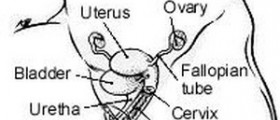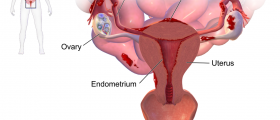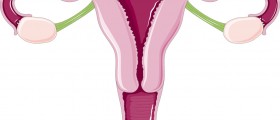
Many women in their reproductive years develop endometriosis. The condition per se is rather debilitating and may cause serious problems, particularly during menstruation when women tend to experience the most excruciating pain of their lives. Even though endometriosis may be efficiently brought under control with certain medications, hysterectomy is one of treatment options which can completely eliminate the pain and help the affected women to get back on track.
What is Endometriosis?
Endometriosis is a peculiar condition in which cells that are normally present in the uterus and make the superficial layer of the organ somehow reach nearby tissues/organs, settle there and cause trouble. Namely, the superficial layer of the uterus acts in a specific way according to the level of hormones within menstrual cycle. The lining of the organ changes in a specific way and prepares for the process of implantation, once an egg is released from the ovaries. In case the egg does not get fertilized, the lining of the uterus sheds and is ejected from the body in the form of monthly bleeding. Now, the clusters of cells that normally belong to the uterus form so called endometrial implants all around the pelvis. They respond to hormonal stimulation during the menstrual cycle and act in the same way as cells inside the uterus. As a result there is bleeding in the affected parts of these organs and tissues and a woman experiences unbearable pelvic pain. Repeated bleeding and inflammation are also powerful contributors to scarring and adhesion formation which in the long run affects fertility and may be blamed for a woman's inability to conceive in spite of regular ovulation.
When it comes to problems endometrial implants cause, these vary from woman to woman and basically depend on their number, size and the exact location. Mild cases of endometriosis are asymptomatic and endometrial implants in these women may be only found accidentally, when pelvic ultrasound is performed for other purposes. However, the majority of patients have to deal with pain. It is predominantly localized in the middle of the pelvis or affects both sides of the pelvis area, may be felt during intercourse and it is either periodic or lasts all the time. Irregular uterine bleeding is one more sign of potential endometriosis.
Women who are complaining about pelvic pain and irregular uterine bleeding especially if they additionally have infertility problems are most likely suffering from endometriosis. In order to definitely confirm the diagnosis doctors need to perform a pelvic exam, ultrasound and laparoscopy (laparotomy). The last exam actually gives insight in the very presence of endometriotic implants, allows doctors to take samples of the tissue and also allow immediate removal of some of these implants.
Why is Hysterectomy Done?
Hysterectomy is an invasive surgical procedure during which the uterus is removed. Now, depending on the very type of the surgery hysterectomy may only include removal of the uterus or the surgeon removes other female reproductive organs too. So, apart from losing the uterus a woman may be left without the ovaries and the fallopian tubes. Some types of hysterectomy also include resection of the upper portion of the vagina.
As for the very surgical approach, doctors may choose between abdominal hysterectomy or vaginal hysterectomy. The former includes cutting of the front abdominal wall, while the latter refers to modified approach when incisions are made in the wall of the vagina.
There are many gynecological conditions that require hysterectomy. What needs to be emphasized is that after the procedure the woman completely loses the ability to conceive. What is more, if the ovaries are removed as well, the surgery pushes the woman directly into menopause (if she has been in her reproductive years prior to the procedure). It is of utmost importance to realize that hysterectomy is not the first choice of treatment in women suffering from endometriosis, especially if they are willing to have more children. So, initially doctors do their best and choose conservative treatment that might reduce the pain and prevent inflammation and scarring in the pelvis.
Endometrial implants may, for instance, be removed by surgical excision. This surgery per se carries risk of damage to the nearby organs such as the ureters, bowel or bladder but may significantly improve the quality of life and together with birth control pills successfully decrease cyst recurrence. There are a couple of more procedures that preserve the uterus while at the same time alleviate the pain. They are LUNA (laparoscopic uterosacral nerve ablation) and presacral neurectomy.
Finally, only in small number of women hysterectomy eventually becomes treatment option of choice. The surgery is not completely successful since the rate of recurrent symptoms can be rather high, up to 63% after hysterectomy alone and 10% in women who have additionally had their ovaries removed. It is estimated that 19% of all hysterectomies performed in the United States are actually indicated in patients suffering from endometriosis.
All in all, endometriosis is a severe medical issue which requires aggressive treatment. During the battle against the disease women may eventually face the loss of their uterus and ovaries being left without further chance to conceive.

















Your thoughts on this
Loading...